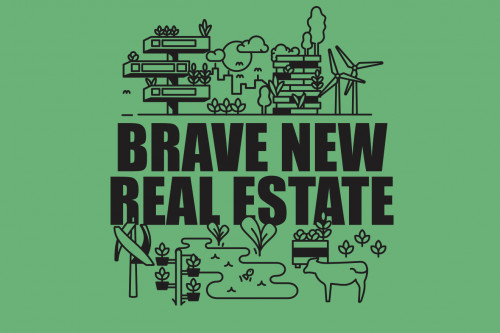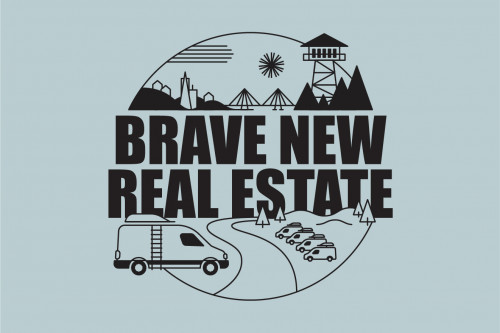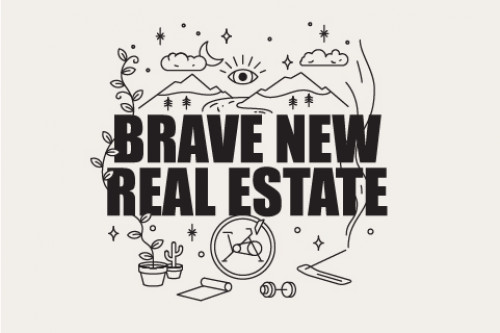The New Real Estate Era

An industry once dominated by low-cost capital, bricks-and-mortar square footage, and insider information is becoming more flexible, transparent, digital, and experience-driven. Investors, developers, designers, occupiers, and operators are reimagining their business models at a rapid pace to account for the evolving ways people interact with the built environment.
Incumbents and new entrants alike are using new technology, advanced analytics, design, and collaboration to reinvent the way space is acquired, developed, sold, used, and operated. Industry leaders are creating not only vibrant experiences and sustainable communities but also new, highly profitable, and enduring revenue streams.
This post and others to follow endeavor to look at the changes happening within the industry, the macroeconomic and behavioral trends behind them and how likely they are to shape the changing way you staff, run and market your real estate projects and business.
In a single generation, we’ve moved away from ownership. We’re now in an on-demand, gig economy where owning things is becoming increasingly expensive and even quaint. This subscription economy continues into every walk of life – music, cars, movies, jobs, and homes, and this is where ‘experience’ becomes even more premium as a critical differentiator.
A new generation of commercial real estate companies have spotted new economic opportunities and now provide services such as co-working spaces, cohousing with hotel-like amenities, on-demand storage, and pop-up space for retailers as a monthly subscription. As a result, some real-estate companies do not see the need to adhere to traditional staples such as the triple-net lease, in which a lessee covers all costs, including real estate taxes, building insurance, and maintenance.
In this new model, building occupants become subscribers instead of tenants; managers become curators, and commercial real estate companies create value by continually providing unique experiences and rapidly anticipating clients’ changing tastes and needs.
As services become more critical to real estate, digital technology, creativity, and experience planning will become an essential part of commercial real estate teams.
Real estate has always worked with ‘the competition’ more than many industries. Investors often pull together a mix of developers and realtors commonly work alongside a Buyer or a Sellers’ realtor to achieve the optimum outcome for everyone.
However, in today’s era, the shift to a positive-sum mindset where everyone works together for a common cause is becoming more prevalent. Demands for seamless, omnichannel brand experiences, require multidisciplinary teams of experts to collaborate regularly. Younger entrepreneurs, who have grown up in a culture of sharing and collaboration, approach business where the first question is, “How can we come together to do something that has never been done before?”
There’s no need to add to all the ink that’s been spilled on US residential brokerage companies’ problems. In the age of discount firms, star agents, open data, and vast sums of venture capital, the traditional models for helping buyers and sellers of commercial and residential real estate are severely challenged.
Property companies and brokerages have merged to produce giant global conglomerates – with cobbled together brands, online platforms and marketplaces like Zillow, Opendoor, Point have disintermediated access to information, and the geographic centers of the property market have shifted and multiplied, but so has the number of people able to access information. The barriers to entry have been lowered, and there is increasingly less differentiation between the giants and the young upstarts. The market needs insight and expert advice, not merely access to information, but without a robust and distinct positioning, it’s impossible to choose between them.
While the consolidation of platforms and large brokerage companies reduces the amount of competition, the push and pull between the brokerage brand and agent brand will only increase. Agents and firms will continue to struggle with how much they need each other. Smaller firms will need to adapt and communicate their niche expertise and specialism by way of focusing on a building type, style, or their marketing approach. Others will continue to provide everything to everyone and struggle to cut through the sea of sameness.
Next-generation sales projects will enable sales teams to proactively identify potential customers for projects by employing rigorous analytics-driven approach, harnessing both publicly available and privately purchased data. This approach can help sales forces develop optimized product offerings, cross-sell, and upsell to willing customers, and offer dynamic pricing by comparing customer behavior patterns and preferences not unlike the airline Industry. Ultimately sales teams will have highly personalized sales pitches and products for each customer or set of customers.
The new era doesn’t present a single method, but we see multiple approaches for different property types and geographic locations with people specialists, platforms, and online transactions available. Eventually, some of these firms will challenge the regulatory statutes that seem to prop up the industry, and we may see a system solely designed around the customer needs as opposed to the industries.
As the things to which we ascribe value begin to change, the notion of premium, of quality, of the sought-after is radically changing. The extravagance and glamour of sleek, polished buildings and starchitects are feeling dated and out of touch. People are turning towards substance, wanting things that have some sense of weight or meaning or context rather than star names or marketing a distant aspiration that has little meaning. The formality of traditional fine dining has been transformed because people aren’t as easily wooed or awed by the veneer that often surrounds these kinds of experiences. We now want quality and conviviality without the gloss, and if designed well, the blended space between creator and customer can elevate the whole experience even further, allow it to take on new energy, and become far more ‘premium’ and engaging.
Informal Luxury – authenticity, and usefulness have emerged as more firms make accessibility a crucial part of their ethos to adapt to the flexible identities and lifestyles of Generation Z and Millennial consumers. People now expect welcoming branded experiences and cause-related initiatives and will look to forge stronger relationships.
We now have validation that consumers will indeed vote with their wallets to improve the financial fitness of their fellow humans when packaged appropriately, so how can the real estate industry, apply the lessons of Warby Parker and TOMS to its agenda?
Building for a sense of belonging, fostering human interaction, and standing for something more than a temporary investment has a more significant impact to play.
Cofounder of co-living company Ollie has “vowed to measure success not by how effectively [they] connect … homes to the Internet of Things or … users to their devices, but rather by how well [they] re-connect humans to one another, the Internet of People.”
The real estate development industry is actively re-inventing their relationship with design. In New York City Design Development companies – Alloy Development, DDG, ASH, and LANG, all have architects as owners/partners of the business. Similar to the role of creative directors in the fashion industry, they manage the design, marketing, and even sales from inception to completion and also on behalf of the development company’s Interest.
While most of the project output is boutique in nature, the common theme is of quality of materials, space, community, and general well being. They actively seek out different partners and unique collaborators and collaborations. An awareness of branding and building digitally sophisticated selling ecosystems keep the experience seamless, connected, and real.
By 2050, it is expected that two-thirds of the global population will live in cities. By then, more and more of our world and living environment will be connected through data and technology. The traditional town and civic institutions, already straining under the combined demands of decaying civil infrastructure and aging populations, will need the private sector to play an even more significant role in determining how cities are connected, planned, built and managed.
We already see Alphabet (Googles parent company) rethinking and remaking an entire neighborhood in Toronto, Quicken Loans taking over security in parts of Detroit and Starbucks and Apple stores have become the town squares and community centers. As Uber and Lyft move into autonomous vehicles and the deluge of branded scooters scattered across the streets of many cities, become even more ubiquitous. They become part of the fabric and language of the city and its real estate. How they are partnered with and built along with will become increasingly important.
In an era of growing human-made pressure on our natural and built environments, our relationship with the places where we work, live, shop, and play is changing radically – and fast. Fluid lifestyles, a desire for genuine sustainability, the emergence of smart city technologies, and an explosion of urban populations are presenting a whole new set of challenges for the 21st century. For today’s successful placemakers, these challenges represent an incredible opportunity to reconnect us with our cultures and our landscapes and create habitats that resonate with the way we will want to live in the decades ahead.
Most of the industry’s current conversation veers towards real estate technology or ‘Proptech’ – When will 5G internet launch? How will driverless cars affect our street design? When will virtual and augmented reality really become ubiquitous? What contracts will blockchain replace? The answers to these questions are essential. They add dimension, create urgency, and provide a fact base. However, honing in on individual technologies can prevent us from seeing the more significant shifts. To capture today’s customers’ companies need to build their communications and brand around the problems they solve and the people they serve, not the products they sell. Companies need to be highly ambitious, deeply personal, hyper-connected, and continuously experimental.
The profound changes going on raise critical questions:
- What do we need to do differently to meet the changing customer needs?
- How will our value proposition and business model need to change?
- How do we stay relevant in this hyper-connected and rapidly changing environment?
- What partners, people, teams, and technologies do we need to build this effectively?
The new real estate era is redefining how we communicate real estate forever. Not everyone in the industry will agree, but those that decide to put humans first stand to build stronger practices amid the forces of commoditization, draw the right customers and talent and command a price premium.
I make no grand conclusions at this juncture but state that we have entered a new era and that the traditional rules for how space is acquired, developed, and used no longer apply.
The themes and questions set out here are by no means a complete set of principles for communicating, designing, and building real estate – it’s just the start of what I hope is a broader conversation. That said, the insights and learnings I’ve touched on here are very much informing our approach to communications, and we’re excited to keep an eye on how these developments evolve over the coming months and years.


